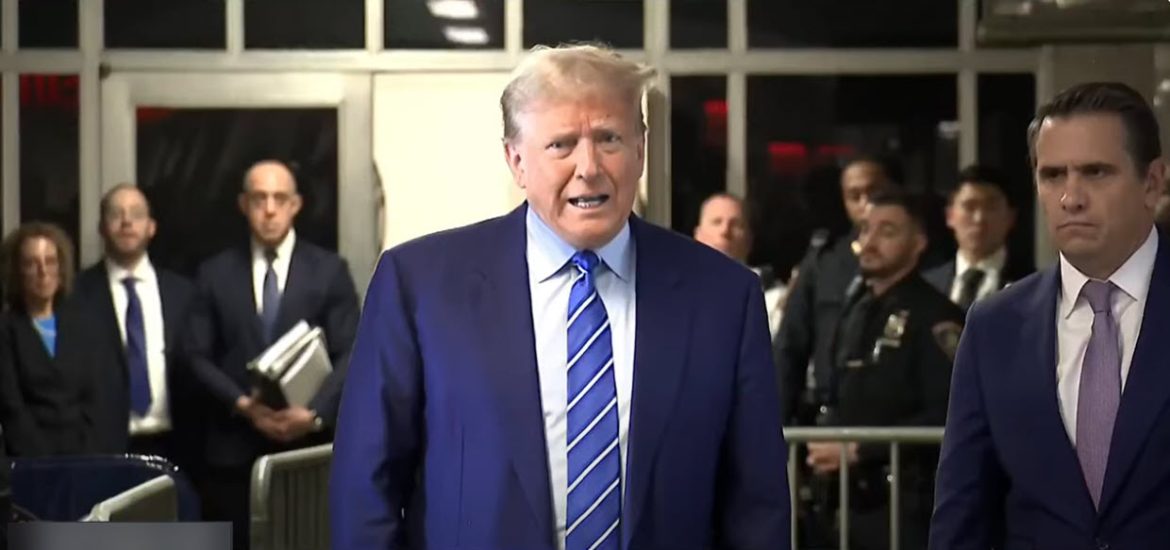Six jurors have been chosen for the trial of former President Donald Trump in New York City, marking a significant step in the legal proceedings. The jury selection process, which began recently, is halfway complete, with efforts underway to assemble a panel of 12 New Yorkers and six alternates.
Trump’s legal team successfully disqualified one juror today due to an anti-Trump social media post, showcasing the meticulousness of the selection process. However, they have faced challenges in disqualifying jurors based on similar criteria, highlighting the complexities of impartiality in such high-profile cases.
The trial, centered on accusations of falsifying business records to conceal payments made to an adult film star before the 2016 election, has drawn widespread attention. As the legal proceedings continue, Trump’s presence in the courtroom adds a significant dimension to the trial’s atmosphere.
On the second day of jury selection, Trump returned to the New York City courtroom, where potential jurors described the unique experience of being in close proximity to the former President. The process has been thorough, with no jurors selected on the previous day, indicating the careful consideration being given to each potential juror.
Upon entering the courtroom, Trump expressed frustration, labeling the trial a “disgrace” and suggesting it should have been dismissed long ago. This sentiment reflects the contentious nature of the case and the polarizing views surrounding Trump’s legal troubles.
In a recent development, prosecutors filed a motion urging that Trump be held in contempt for allegedly violating a gag order through his social media posts. New York District Attorney Alvin Bragg argued that Trump’s posts, which reportedly targeted key witnesses like Michael Cohen and Stormy Daniels, constituted a willful violation of the gag order.
As the trial progresses and jury selection continues, the legal battle surrounding Trump’s alleged actions before the 2016 election unfolds against a backdrop of intense scrutiny and legal maneuvering.



